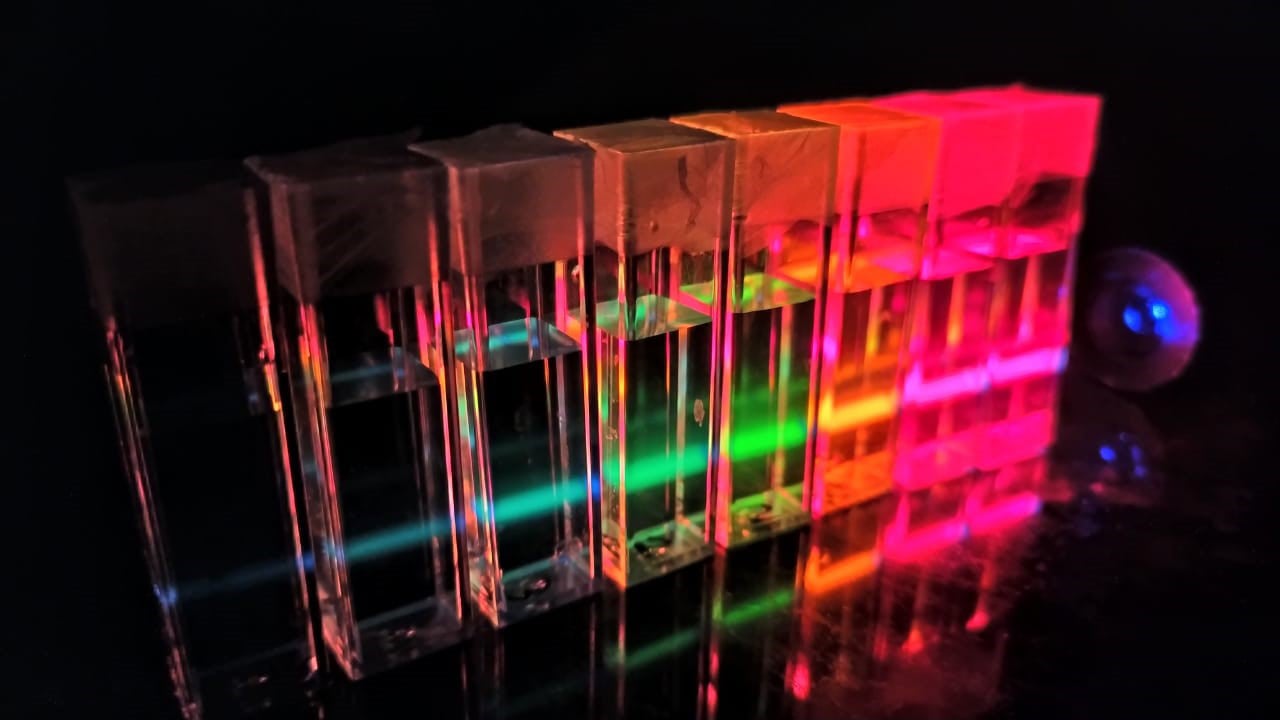Cadmium telluride (CdTe) quantum dots of different sizes emitting light in response to excitation by UV laser. Credit: Pedro Felipe Garcia Martins da Costa
Researchers monitored the diameter of semiconductor quantum dots in real time by observing the wavelength of the emitted light.
Luminescence is the outcome of a process where an object absorbs light at one wavelength and re-emits it at a different wavelength. During this process, electrons in the material’s ground state absorb light and become excited to a higher energy state. After a specific period, unique to each excited state, the electrons return to lower energy states, including the ground state, and emit light. This phenomenon is utilized in a wide range of technological applications, involving highly efficient and reproducible emitting devices that can be easily miniaturized.
The materials with the highest luminescence efficiency include quantum dots (QDs), currently used in high-resolution displays, LEDs, solar panels, and sensors of various kinds, such as those used for precision medical imaging. Functionalization of the surface of QDs with various types of molecules permits interaction with cellular structures or other molecules of interest for the purpose of investigating molecular-level biological processes.
Quantum Confinement in Quantum Dots
QDs are semiconductor nanoparticles whose emissive characteristics are directly linked to dot size, owing to the phenomenon of quantum confinement. For this reason, monitoring and control of crystal growth during the synthesis of QDs in solution permits intelligent planning of the desired luminescence. In an article published in the journal DOI: 10.1038/s41598-024-57810-8
The study was funded by the São Paulo Research Foundation.



















Discussion about this post